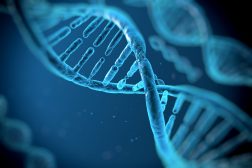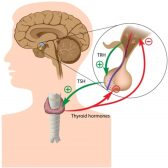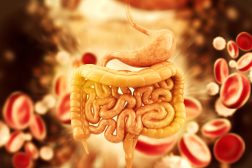Definition
noun, plural: amino sugars
A sugar molecule the nonglycosidic hydroxyl (–OH) group is replaced by an amine (-NH2) group
Supplement
An amino sugar is a sugar molecule wherein the hydroxyl group is replaced by an amine group. It is also referred to technically as 2-amino-2-deoxysugar. There are about sixty amino sugars that have been identified and the predominant amino sugar is N-aceylglucosamine.
Hexosamines are amino sugars wherein the sugar derivative is a hexose. Examples of hexosamines are glucosamine (based upon glucose), galactosamine (based upon galactose), fructosamine (based upon fructose), and mannosamine (based upon mannose). In particular, glucosamines are amino sugars that are naturally present in the shells of crustaceans, in the animal bones, and fungi. They may also be produced synthetically to be marketed in the forms of N-acetylglucosamine, glucosamine sulfate, or glucosamine hydrochloride as a dietary supplement (usually in combination with chondroitin) to reduce the symptoms of arthritis.
Galactosamine is an amino sugar derived from galactose. It occurs naturally, such as in certain glycoprotein hormones (e.g. luteinizing hormone and follicle-stimulating hormone).
Fructosamine is an amino sugar based upon fructose. In humans and other animals, it forms when glucose combines with protein present in blood serum (mainly, albumin). The resulting fructosamine is also referred to as glycated serum protein. The more glucose molecules are present in the blood the more glycated proteins are formed. Thus, the amount of fructosamine from blood sample is measured to monitor glycated protein levels in the blood, especially in diabetic individuals.
Mannosamine is an amino sugar derived from mannose. In biological systems, D-mannosamine (2-amino-2-deoxymannose) is a constituent of neuraminic acid. Neuraminic acid is a nonose, i.e. a 9-carbon monosaccharide. It is one of the derivatives of sialic acids. Sialic acids occur widely in animal tissues, mostly in glycoproteins and gangliosides. In humans, sialic acid is greatest in amount in the brain where it is involved in neural transmission.
See also:
- glucosamine
- N-acetylglucosamine
- galactosamine
- fructosamine
- mannosamine






